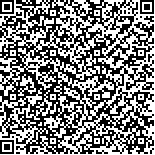下载中心
优秀审稿专家
优秀论文
相关链接
摘要

当前对MODIS LAI产品的真实性检验工作中,更多的是关注遥感产品在数值与趋势上与地表真值的一致性程度,很少工作能够全面分析遥感LAI产品偏差来源以及不同来源的偏差对全局偏差的贡献率。本文在对MODIS LAI产品进行真实性检验基础之上,进一步分析了MODIS LAI产品偏差来源。将遥感产品真实性检验偏差来源分解为反演模型,反射率数据和冠层聚集效应3个方面,并定量分析各个偏差源对真实性检验结果的影响。以河北省怀来玉米为研究对象,结合实测LAI数据和Landsat 8 OLI(Operational Land Imager)数据建立NDVI LAI半经验模型,得到LAI参考数据,据此对MODIS LAI产品进行真实性检验及偏差分析。研究表明,该区域MODIS LAI产品存在明显的低估现象,参考数据和MODIS LAI数据均值分别为3.53 m2/m2和2.33 m2/m2,MODIS产品低估为34.14%。在各个偏差因素中,反射率数据的差异对结果影响最大,即MODIS地表反射率数据与Landsat 8 OLI地表反射率数据的差异造成的偏差占总偏差的57.50%;聚集效应的影响次之,占总偏差的28.33%;模型差异对结果的影响最小,占总偏差的14.17%。本研究对遥感产品真实性检验及其不确定性分析具有一定的借鉴意义。
An assessment of the MODIS Leaf Area Index (LAI) product shows a clear focus on the consistency in value and temporal trend between remote sensing products and the "ground truth." However, few studies have comprehensively analyzed the bias sources and quantified the contribution of different biases on the global deviation. The current study evaluates the MODIS LAI product by analyzing the MODIS LAI bias in terms of three aspects:algorithm, reflectance data, and clumping effect. We then quantify the individual influence. The bias analysis and validation of the MODIS LAI product are conducted by utilizing measured data of corn plants in a field in Huailai County, Hebei Province. Results indicate an evident underestimation of the MODIS LAI by as much as 34.14% in this area. The mean LAI values of the reference LAI and MODIS LAI are 3.53 m2/m2 and 2.33 m2/m2, respectively. The reflectance data in the bias analysis has the most significant effect on the total deviation. The bias caused by the difference between the MODIS reflectance and Landsat 8 OLI reflectance is 57.50% of the total; the clumping effect accounts for 28.33% of the total; and the bias caused by algorithm is the smallest at only 14.17% of the total. The proposed method positively influences the validation of the remote sensing product and uncertainties analysis.

